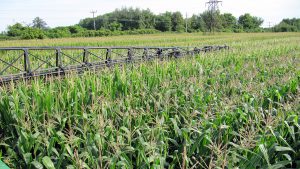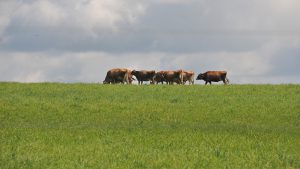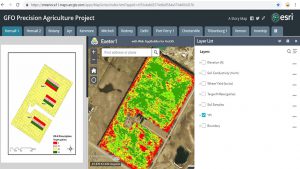Value creation
CEREALS INDUSTRY CONSIDERS RESEARCH FUNDING OPTIONS

CANADA IS FALLING behind the world in funding cereals plant breeding research and the models being proposed to fix the situation have prompted sometimes heated discussion among producers across the country.
TWO PROPOSALS
One of the models includes an end-point royalty, which would be deducted at the elevator or processor when the producer delivers grain grown from certified or saved seed at harvest. The money would be returned to the breeder that produced the variety of seed that was delivered.
The ‘trailing’ royalty model would have the producer enter a contract with the seed seller for certified varieties at the beginning of the season. He or she would pay a royalty then, and in subsequent years, on the saved seed from those varieties.
Both of these models could be supported by creating regulations within Canada’s Plant Breeders’ Rights Act, and would be applicable only to varieties protected under the 1991 Act of the International Convention for the Protection of New Varieties of Plants (UPOV’91).
UPOV ‘91 is a treaty ratified by Canada in 2015 that protects plant breeders’ rights and is aimed at encouraging the development of new varieties.
About 25 per cent of the country’s total registered varieties are currently under UPOV’91, although this number is going up, according to Anthony Parker, commissioner of the Plant Breeders’ Rights Office at the Canadian Food Inspection Agency (CFIA).
Only new varieties entering the marketplace would be subject to either an end-point royalty or trailing royalty.
Parker has been leading cross-country consultations on the two models since late last year. He said that the federal government was asked by the Grains Roundtable — a group representing the entire grains value chain — to conduct the consultations. The Roundtable endorsed the two models in November 2017.
“The consultations are going well from our perspective,” he says. “Farm-saved seed is an emotional topic — but as you present the facts and figures and what’s happening in other jurisdictions, it becomes more of an analytical discussion.”
“Producers are concerned about cost — in cereals especially, margins are thin,” Parker says. “They want to know how much will I have to pay and what will I get in benefits?”
While admitting that he doesn’t have the answers to all those questions at this point, Parker says that most producers recognize that greater investment in plant breeding is valuable.
The question now is what are the thresholds around what can be paid, and how will it improve producer profitability.
SEED INDUSTRY
Seed Synergy, an umbrella group representing six major seed organizations, has come up with a trailing royalty model — called the Seed Variety Use Agreement (SVUA) — that they’re presenting to producers.
Seed Synergy’s members are: Canadian Seed Growers’ Association, Canadian Seed Trade Association, Canadian Seed Institute, Commercial Seed Analysts Association of Canada, Canadian Plant Technology Agency, and CropLife Canada.
Essentially, the SVUA would allow breeders, if they choose, to set a fee on farm-saved seed to account for the investments in research needed to bring the variety to market.
If a producer buys certified seed of a protected variety, he or she would sign an agreement, declare each year whether harvested grain was saved for seed use, and pay a fee the next year. The amount of that saved seed would be verified and the producer would get an invoice for every year that the saved seed is grown. Proceeds would be returned to the breeders.
“Farmers could choose to participate or not in an SVUA,” says Ellen Sparry, general manager of C&M Seeds. “And they would only be paying the royalties on UPOV varieties.”
Sparry has been presenting Seed Synergy’s proposal at industry meetings.
Among the producer benefits Sparry outlines are better access to new varieties and more choice among varieties, more competition among more players in the seed research industry, and an industry that’s more competitive internationally. The SVUA model would also provide stable, long-term investment in this kind of research.
Other countries, including Australia, France, the Netherlands, and the UK all have some form of compensation system for plant breeding research.
LACK OF INVESTMENT = LOWER COMPETITIVENESS
One of the reasons for making changes to the current system is that Canada lags behind other jurisdictions when it comes to investing in cereals research. Sparry says that, while the UK spends $7 an acre in wheat variety development, and Australia and France spend about $3 an acre, Canada invests only $2.13 an acre. A result of this under-investment is that producers are missing out on $170 million in annual benefits.
Investment in cereals research also trails other Canadian crops such as canola and corn. The 23 million acre canola crop reaps the benefits of a nearly $95 million annual investment, while there’s only $24 million put into cereals.
CONCERNS
The proposal is not without its detractors. The Manitoba, Saskatchewan, and Alberta oat, barley, and wheat commissions — who have attended many of the meetings — have written to the federal minister of Agriculture and Agri-Food Canada to register their concerns with both the proposed models, saying that not enough economic analysis has been done, that the consultations need to be broadened, and that other options should be considered.
The National Farmers’ Union has taken a stand against the proposals, saying that the government is trying to eliminate farmers’ right to freely save and reuse their own seed.
Parker said that there are strong opinions on each end of the spectrum, and that most producers are in the middle — looking for more detailed information before weighing in. He also said there is no timeline for the duration of the consultations or a hard deadline for putting any model in place.
He and his colleague, Carla St. Croix, have already presented the options at a number of industry conferences and meetings, including Grain Farmers of Ontario’s Delegate Policy Day, and are making themselves available for more in 2019. The government expects to have online consultation pages available on the Agriculture and Agri-Food Canada and CFIA websites.
“These are iterative consultations — we’re trying to build in the feedback and concerns of producers as we go,” Parker says. “The government is in no rush and recognizes this will take time.”
More details about Seed Synergy’s SVUA can be found at www.seedvaluecreation.ca. •











